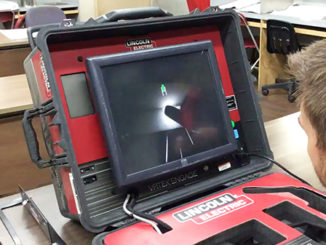By Katie McFadden

Air ducts are at the heart of a mechanical system’s efficiency, productivity, and indoor air quality. Properly managing air duct efficiency is essential for thermal performance, maintenance control, uniform heating and cooling, and preventing damaging condensation. Maintaining a fiber-free, particulate-free air stream is equally important for many facilities and their occupants. Closed-cell, fiber-free elastomeric duct liner provides proven, safe, and durable protection, with the added benefit of noise reduction that external wraps don’t have.
The proper selection and installation of mechanical insulation on air ducts and their related systems is critical to the outcome of a successful project. Installers, engineers, and architects should consider a variety of factors when choosing insulation, including building codes, specific application challenges, material capability, installer training, as well as time and budget constraints. Understanding your options for insulation materials will help provide the best solution for your application.
Many resources exist to ensure the best install for a product based on manufacturer recommendations from application manuals and online resources. However, project managers should consider available installer training programs like those available from manufacturers when selecting insulation for air ducts. A well-trained crew means the material gets installed quickly and correctly the first time, leading to fewer callbacks and maintenance headaches. Understanding best practices and learning installation tips, like stirring, not shaking adhesive cans, compression fit of material or how to best prep surfaces to be clean and dry, will always provide the best substrate and help a project run smoothly.
Ease of installation is another consideration when insulating air ducts. Self-adhering and fire & smoke/self-adhering have the benefit of an advanced pressure-sensitive adhesive system that helps eliminate gluing time and installation labour. Both are engineered to safeguard IAQ, attenuate HVAC noise, and reduce energy loss when used to line or wrap HVAC ductwork. Lining or wrapping ducts will result in more comfortable occupant spaces, reduced energy costs, and quieter indoor environments.
Another option that contractors appreciate is a highly conformable, acoustical insulation duct liner, engineered for factory application by sheet-metal fabricators using automated coil lines. Ideal for schools, hospitals, hotels, commercial and public buildings, it is designed for automated applications using water-based adhesives in accordance with SMACNA pinning and spacing guidelines, or unpinned applications using the proper specified adhesive.
Consider self-adhering and fire & smoke self-adhering insulation with antimicrobial product protection to prevent the growth of mold and mildew on the duct insulation. It can be cleaned and sanitized like any hard surface material, potentially saving facilities valuable remediation resources in the future.
Offering coverage that meets the needs of today’s market is important. Whether you are the mechanical engineer, the insulation contractor, or an insulation distributor, choose an insulation manufacturer that offers a flexible, effective solution, no matter the job type, equipment, or level of performance.■
Katie McFadden is Demand Generation Manager & Application Specialist with Armacell Canada. Armacell offers AP/ArmaFlex SA (Self Adhering) and AP/ArmaFlex FS SA (Fire & Smoke/Self-Adhering), both of which are made with Microban® antimicrobial product protection. Armacell offers easy to access digital tools at armacell.us/solutions and 10- or 15-year limited warranties, giving specifiers, contractors, and distributors peace of mind that the product is backed by Armacell’s 70 years of industry expertise.



